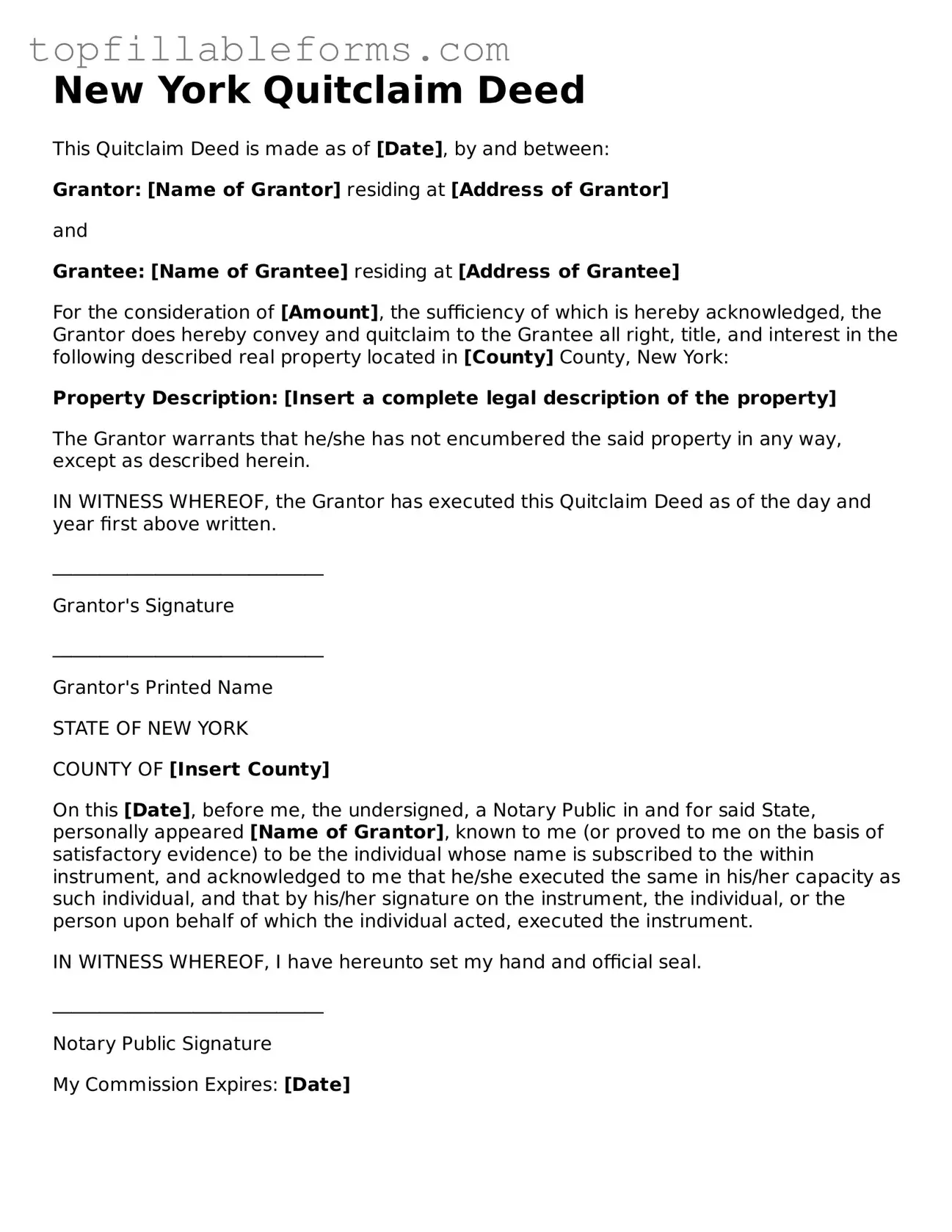New York Quitclaim Deed
This Quitclaim Deed is made as of [Date], by and between:
Grantor: [Name of Grantor] residing at [Address of Grantor]
and
Grantee: [Name of Grantee] residing at [Address of Grantee]
For the consideration of [Amount], the sufficiency of which is hereby acknowledged, the Grantor does hereby convey and quitclaim to the Grantee all right, title, and interest in the following described real property located in [County] County, New York:
Property Description: [Insert a complete legal description of the property]
The Grantor warrants that he/she has not encumbered the said property in any way, except as described herein.
IN WITNESS WHEREOF, the Grantor has executed this Quitclaim Deed as of the day and year first above written.
_____________________________
Grantor's Signature
_____________________________
Grantor's Printed Name
STATE OF NEW YORK
COUNTY OF [Insert County]
On this [Date], before me, the undersigned, a Notary Public in and for said State, personally appeared [Name of Grantor], known to me (or proved to me on the basis of satisfactory evidence) to be the individual whose name is subscribed to the within instrument, and acknowledged to me that he/she executed the same in his/her capacity as such individual, and that by his/her signature on the instrument, the individual, or the person upon behalf of which the individual acted, executed the instrument.
IN WITNESS WHEREOF, I have hereunto set my hand and official seal.
_____________________________
Notary Public Signature
My Commission Expires: [Date]
